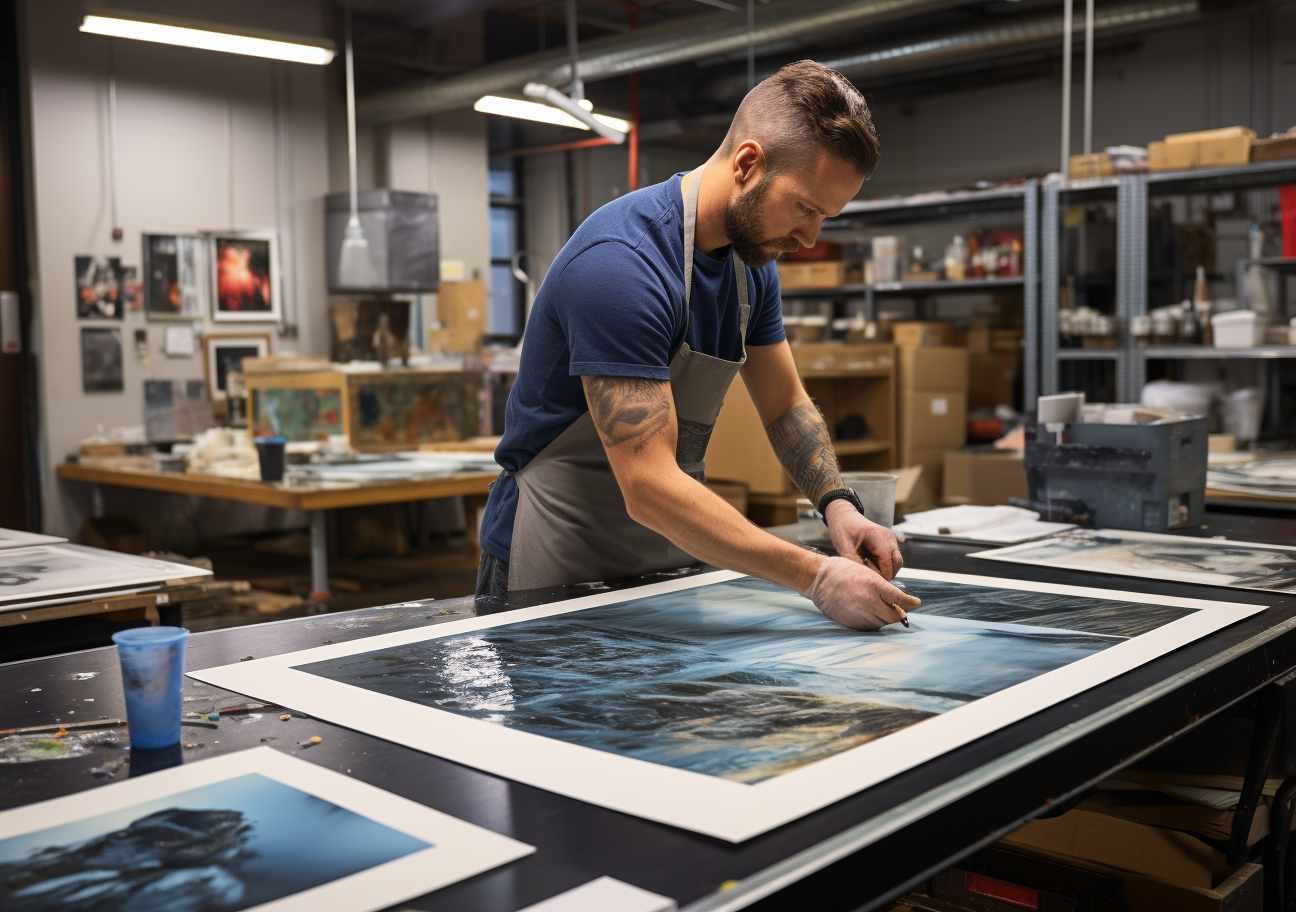You may never have heard of art Print Matting? Decorating your living space with framed art prints and photographs can inject life and personality into any room. However, the framing process can be more intricate than it seems, especially when it comes to matting. This blog post will break down the art of matting and its crucial role in making your art print or photo ready for framing.
What is Art Print Matting?
Art Print Matting refers to the addition of a paper-based or cardboard-like border that surrounds your art print or photograph. Not only does matting serve an aesthetic purpose, but it also protects the art from coming into contact with the glass of the frame, thereby preventing potential damage.
Why is Matting Important?
Aesthetic Appeal
Art Print Matting can enhance the visual appeal of your artwork by providing a buffer zone that draws the eye toward the central image.
Protection
It acts as a protective barrier between the art and the frame, helping to prevent issues like condensation or sticking to the glass.
Focus
A well-chosen mat can isolate the artwork, directing the viewer’s attention and reducing visual noise.
Types of Matting Materials
- Paper Mat: Economical but less durable.
- Alpha-Cellulose Mat: Acid-free and ideal for medium to long-term framing.
- Cotton Rag Mat: Made from cotton fibers, offering the highest level of protection.
How to Choose Matting for Your Art
When choosing matting, consider factors such as:
- Color: Usually, neutral tones like white or off-white work best.
- Texture: Choose a texture that complements your artwork.
- Thickness: The mat’s thickness can vary and should be in proportion to the size of the art and the frame.
Sizing and Dimensions
When it comes to the dimensions of your matting, the rule of thumb is that the mat border should be at least 1.5 to 3 times wider than the frame molding.
How Matting Affects Pricing
Opting for high-quality matting materials and professional matting services can add to the overall cost of framing your artwork, but it is generally a worthy investment for both the aesthetic and protective benefits.
Tips for DIY Art Print Matting
- Use a T-square or a straight edge for precise measurements.
- Always opt for acid-free matting to prevent artwork damage.
Conclusion
Matting is an essential element in the art of framing that serves both aesthetic and functional purposes. Understanding its importance and how to properly execute it can significantly improve the presentation and longevity of your framed art pieces.


